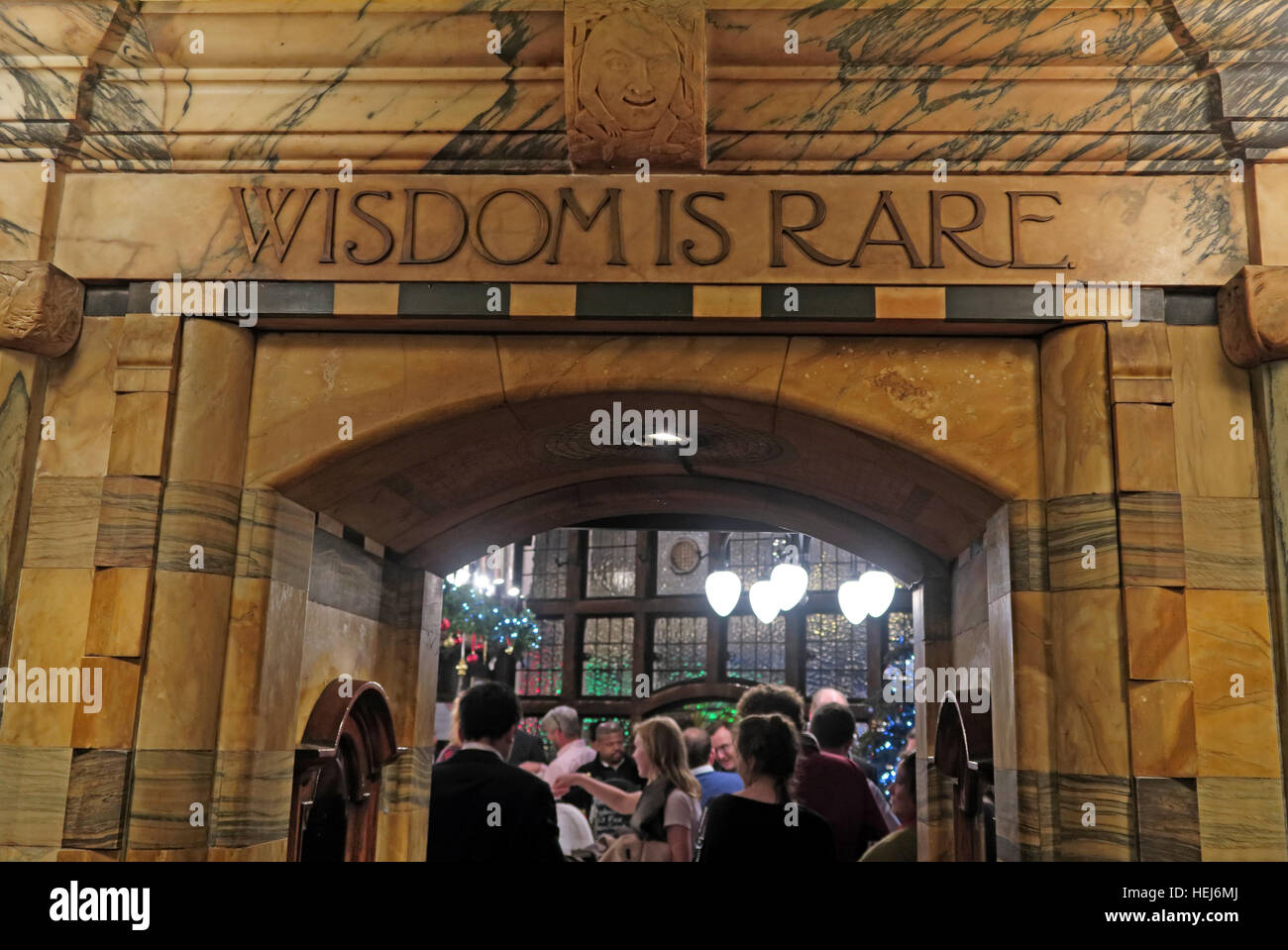The Black Friar, Blackfriars, London, England, UK at night- Wisdom Is Rare

Image details
Contributor:
Tony Smith / Alamy Stock PhotoImage ID:
HEJ6MJFile size:
48.6 MB (1.8 MB Compressed download)Releases:
Model - no | Property - noDo I need a release?Dimensions:
5040 x 3372 px | 42.7 x 28.5 cm | 16.8 x 11.2 inches | 300dpiDate taken:
19 December 2016Location:
174 Queen Victoria Street, Blackfriars, London, EnglandMore information:
The Black Friar Pub. Post-1903 work by Herbert Fuller-Clark (b.1869, d. after 1912). Original building 1875. Remodelled in several stages beginning 1903, 1914, and 1925. 174 Queen Victoria Street, London EC4. Individual sculptures by Nathaniel Hitch, Frederick Callcott, Henry Poole, and Farmer and Brindley. According to Philip Ward-Jackson, Hitch was responsible for the stonework grotesques on the exterior, and for a considerable amount of similar work in wood in the interior. Callcott created the pattern for the larger copper relief scenes, representing the day to day activities of the friars. . . . It seems probable that Callcott went on working on those reliefs until shortly before his death in 1925, when the rather more prestigious Henry Poole took over, to produce the relief work in the Small Saloon Bar. One of Callcott's frieze-like panels, entitled Saturday Afternoon, was to be repeated on the screen wall, separating the Luncheon Bar from the Small Saloon Bar, although it looks quite different in its new form, because the figures are much more widely spaced out, and the coloured marbles in the second rendering give it more depth. Of these artists, Hitch (1841-1935), deserves to be better known. Following an apprenticeship to Farmer and Brindley, he had a very long and distinguished career as a sculptor: his work can be found at Cardiff Castle, suggesting that he was probably a member of William Burges's workforce there, and also in many churches and cathedrals including Truro Cathedral and Westminster Abbey. He was particularly associated with the architects W. D. Caröe and J. L. Pearson. It is worth noting that the popular London Encyclopaedia disagrees about the dates and artists involved here, stating simply that the building was "erected in 1875, the ground floor being remodelled in 1905 by H. Fuller Clark. The outside is covered with mosaics and carved figures by Henry Poole (1903).